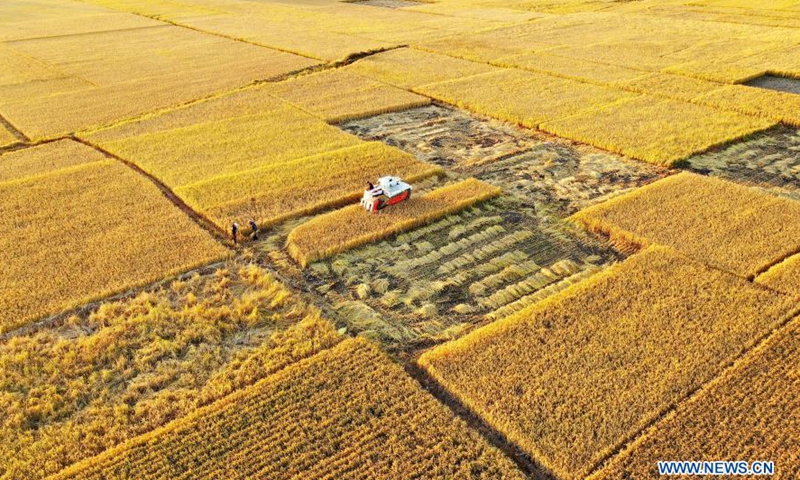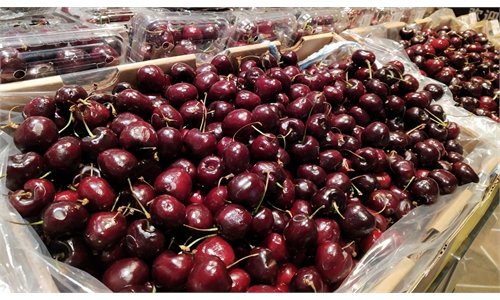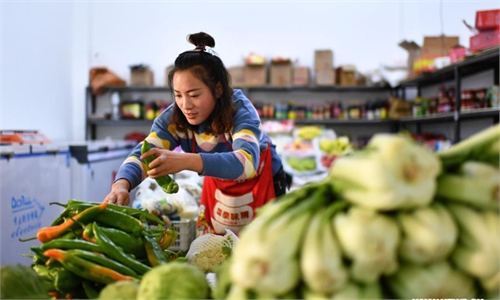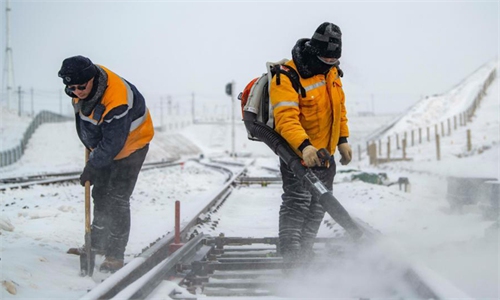
Aerial photo taken on Oct. 18, 2020 shows harvesters operating in rice fields at Jiangzhuang Village of Luanzhou City in north China's Hebei Province. China's grain output reached nearly 670 billion kg in 2020, up 5.65 billion kg, or 0.9 percent, from last year, the National Bureau of Statistics (NBS) said on Thursday. This marks the sixth consecutive year that the country's total grain production has exceeded 650 billion kg. The bumper harvest comes despite disrupted farming as a result of the COVID-19 epidemic, which has been held in check thanks to efforts to ensure the transportation of agricultural materials and strengthen farming management.Photo:Xinhua
Experts and officials said that the supply of seed industry in China is secure during an online meeting, though there is still a big gap between China and developed countries.
China should increase investment in seed industry development, and drive agricultural modernization through the seed industry's pioneering modernization, according to experts, media reported on Sunday.
"Recently, people from all walks of life have been worried about whether China's seed industry has been 'stagnating.' We judged that overall the supply is safeguarded and the risks are manageable," Sun Haoqin, deputy director general of the seed management department of the Ministry of Agriculture and Rural Affairs, said in an online video.
Sun added that China can completely rely on its own supply for seeds of agricultural crops, especially grain seeds.
“China has made sure that grain mainly uses Chinese seeds. The provenances of pigs, cattle, sheep and other livestock and poultry and some aquatic products are guaranteed with Chinese supply. A small number of aquatic products and seeds of vegetables came from imports, however only parts can be substituted,” Sun noted.
During the past four decades, China has undertaken four upgrades of vegetable varieties, and more than 5,000 new varieties have been bred, and the independent rate of vegetable varieties is 87 percent, according to statistics from the Chinese Academy of Agricultural Sciences.
Currently, there are 25 foreign-funded seed companies in China, whose market share is about 3 percent, and imported seeds account for only 0.1 percent of crop breeding, according to open data. But some varieties are reliant even more than 90 percent on imports, for example, the foreign dependence of broccoli reaches 95 percent, and the import dependence of hybrid carrots, spinach and onions exceeds 90 percent.
Officials from the agriculture ministry revealed that although the coverage rate of improved crop varieties in China is more than 96 percent, and the area of independently bred crop varieties accounts for more than 95 percent, there are still many deficiencies and gaps in the protection and utilization of seed resources, independent innovation in science and technology, and the level of enterprise development between China and developed countries.
Within China's agricultural structure, the proportion of planting and animal husbandry is 6:4, while that of developed countries is generally closer to 3:7.
"From the perspective of Chinese people's consumption behavior and food needs, it is entirely possible to further adjust the ratio of planting to animal husbandry to 5:5," said Zheng Xinli, former deputy director of the Policy Research Office of the CPC Central Committee.
According to Wang Zongli, director of the National Animal Husbandry Station, the self-sufficiency rate of core provenance in the breeding industry of China's livestock and poultry has exceeded 75 percent.
Global Times



